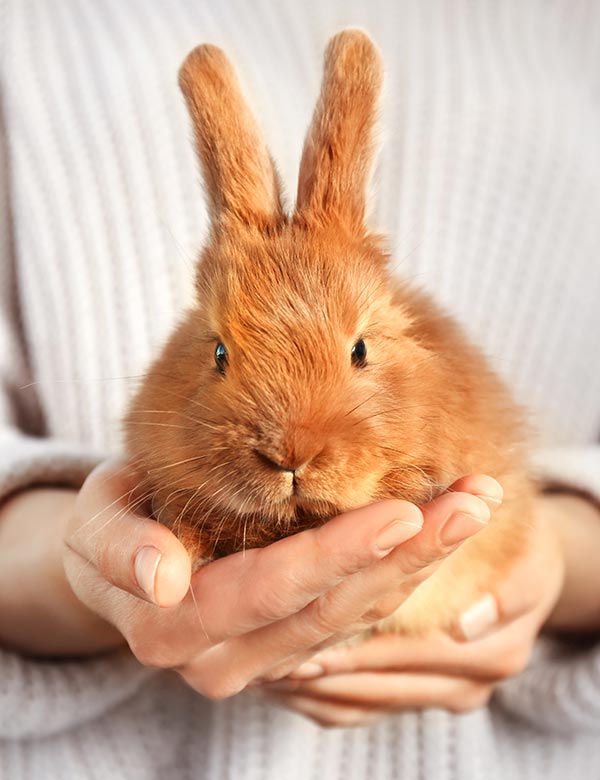Bringing Bunny Home
When you first bring home a rabbit, one of the most useful tools for helping him to feel at ease is your imagination. How do you and your household look to him? Add a little common sense, a dash of patience, and a few basics of rabbit care and behavior, and you’ve got a recipe for a lifelong friendship.
While you are observing and learning about him, bear in mind that during these early days he may not “be himself.” He may be too scared to show you how affectionate he’s going to be once he recovers from the shock of relocation. She may be feeling so insecure that territorial marking is almost an obsession. She may be too scared to let you hold or touch her. He may be too scared to tell you he doesn’t like to be held. Or your bunny may be one of those rare mellow, confident individuals whose new family needs none of the following suggestions.
During this important transitional period, the two most important contributions you can make are 1) set up a friendly, safe environment and 2) let him set the pace for getting acquainted.
Home Base
Your bunny’s first days in your home should be spent primarily in a small starter space. Even though you may plan on having your bunny run and play throughout your entire house, this arrangement should evolve gradually—plan on a limited area during the training and orientation period. By using a baby gate, areas such as bathrooms, hallways, or kitchens can make ideal training rooms.
Or create an instant starter space by buying an exercise-pen from a pet supply store which can be set up anywhere in the house. Choose a spot that gets some regular, not-too-noisy traffic, where he can see and hear but not be trampled by your daily routines. Put down a piece of linoleum to protect your floor and a carpet remnant or washable rug to please your bunny. Start housetraining by providing one or two litter boxes. A fresh layer of oat and/or timothy hay on top of the litter will both encourage and reward her for hopping in. Care Fresh, Critter Country and Eco-Straw by Oxbow are recommended litters. DO NOT USE PINE SHAVINGS: They are TOXIC. (Read Litter Training Your Bunny)
Give her a cardboard box with two bunny-size doors cut out as a hiding and chew place. Start him on the road to good chewing habits by removing forbidden and dangerous temptations such as house plants, electric cords, and books. (Read Rabbit Proofing Your House). Provide permitted alternatives such as untreated wicker or sea-grass baskets and matts, cardboard tubes (paper towel, toilet paper tubes), apple tree or grape vine branches (as long as they’ve been dried for a month or more), plenty of fresh hay, and plastic baby toys for tossing. Bunny Basic/T by Oxbow is an excellent pellet food for your bunny. Give lots of fresh vegetables. Fresh water in a heavy ceramic bowl should be available at all times.
Great Expectations, and what to do about them
As with good housetraining habits, building a friendship may take time and patience. If he’s not ready to be petted yet, caress him with your voice. Talk to him, or to anyone while in his presence. Bunnies enjoy listening to their humans talk on the phone. Hang out with her in rabbit fashion, by sitting quietly on the floor. Show her that she can hop over to you, take a few get-acquainted sniffs and gentle nibbles, and then hop away again. This hands-off approach paves the way to a hands-on relationship. Place a small treat or two (a sprig of parsley or carrot-top, a sliver of apple) and a few toys on the floor next to you, to make her visit even more rewarding.
